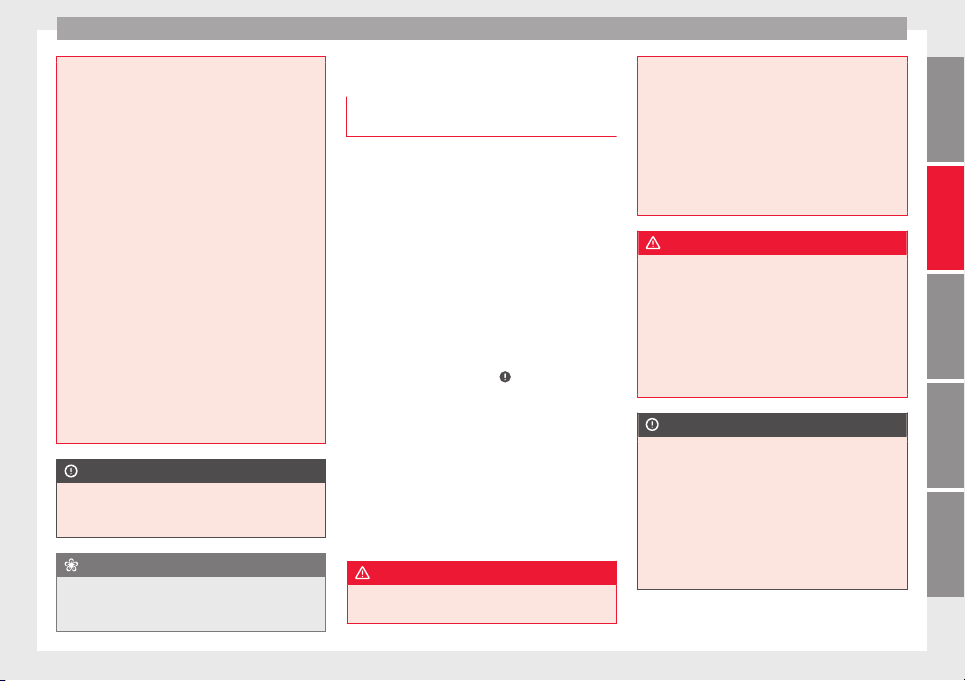Loading ...
Loading ...
Loading ...

Checking and refilling levels
●
The brake fluid shou
ld be changed regular-
ly in accordance with the instructions given
in the Maintenance Programme.
●
Always ensure that you use suitable brake
fluid. Only used brake fluid that conforms to
the VW 501 14 standard, FMVSS 116 DOT 4
standard or even the DIN ISO 4925 CLASS 4
standard. Other types of brake fluid could af-
fect brake operation and reduce braking pow-
er. Do not use a brake fluid if the container
does not specify compliance with the
VW 501 14, FMVSS 116 DOT 4 or
DIN ISO 4925 CLASS 4 standards.
●
The replacement brake fluid must be new.
●
Brake fluid should be stored in the closed
original container in a safe place out of reach
of children. Risk of poisoning!
●
If the brake fluid is left in the system for
too long and the brakes are subjected to
heavy use, vapour bubbles may form in the
brake system. This would seriously affect the
efficiency of the brakes and the safety of the
vehicle. This may cause an accident.
CAUTION
Brake fluid damages the vehicle paintwork.
Wipe off an
y brake fluid from the paintwork
immediately.
For the sake of the environment
Brake fluid is an environmental pollutant.
Col
lect any spilt service fluids and allow a
professional to dispose of them.
Windscreen washer reservoir
Chec
k
in
g and topping up the wind-
screen washer reservoir with water
Read the additional information carefully
›››
page 33
Check the water level in the windscreen
washer reservoir regularly and top up as re-
quired.
●
Open the bonnet ››› page 186.
●
The washer reservoir is marked with the
symbol
on the lid.
●
Check there is enough water in the reser-
voir.
●
To top up, mix water with a window cleaner
recommended by SEAT
›››
. Please follow
the in
s
truction
s for use found on the packag-
ing.
●
In cold weather, a special antifreeze should
also be added to prevent the water from
freezing.
Reservoir capacity
The washer bottle capacity is approximately 3
litres.
WARNING
If the water from the windscreen washer does
not cont
ain enough anti-freeze, it may freeze
on the windscreen and rear window, reducing
forw
ard and rear visibility.
●
In winter, ensure the windscreen washer
contains enough anti-freeze.
●
In cold conditions, you should not use the
windscreen wiper system unless you have
warmed the windscreen with the ventilation
system. The antifreeze could freeze on the
windscreen and reduce visibility.
WARNING
Never mix an unsuitable antifreeze or other
s
imil
ar additives with the windscreen washer
water. A greasy layer may be formed on the
windscreen which will impair visibility.
●
Use clean water with a window cleaner rec-
ommended by SEAT.
●
If necessary, add a suitable antifreeze to
the water in the reservoir.
CAUTION
●
Do not mix
cleaning products recommen-
ded by SEAT with other products. This could
lead to flocculation and may block the wind-
screen washer jets.
●
When topping up service fluids, make abso-
lutely certain that you fill the fluids into the
correct reservoirs. Using the wrong fluids
could cause serious malfunctions and engine
damage!
195
Technical dataAdviceOperationEmergenciesSafety
Loading ...
Loading ...
Loading ...